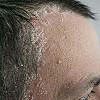Priapism
What Is It?
Priapism is an abnormally prolonged and often painful erection. This erection may not be related to sexual desire or stimulation. It often won't be relieved by orgasm.
Priapism may start after prolonged sexual activity, although this by itself is not believed to cause priapism. Most men seek medical attention within hours to days, but a few people may have a partial erection that persists for weeks.
Priapism can affect males of any age. Most cases occur in boys aged 5 to 10 years or men aged 20 to 50 years. In young boys, the most common cause is sickle cell disease. In adult males, the leading cause is drug treatment of erectile dysfunction, especially injection therapy. Other less common causes include recreational drug use, trauma to the genitals or groin, other medications and spinal cord problems.
In up to one-third of cases, no specific cause can be found.
In a normal erection, the veins that drain blood from the penis narrow and cause blood to back up, which makes the penis stiffen and swell. After the veins relax and open, the penis will not be erect.
In most cases of priapism, these veins do not relax after orgasm, which causes the penis to remain erect. Less commonly, priapism occurs when so much blood flows into the penis that it cannot drain, even though veins that function properly. This increased blood flow is usually caused by a damaged blood vessel.
Symptoms
Symptoms of priapism include:
-
A painful erection that lasts longer than to four to six hours and is not relieved by orgasm
-
A partial erection that lasts longer than several days, even if it is not painful
Diagnosis
Your doctor will ask about your medical history, and use of medications, drugs and alcohol. He or she will examine you, and will order blood tests. Additional tests may include:
-
An ultrasound or angiogram (X-ray using dye injected into blood vessels) of the penis
-
A blood sample from the penis
Expected Duration
Usually priapism does not improve without medical attention.
Prevention
In a few cases, priapism can occur more than once. If this happens, it is important to avoid medications, alcohol or drugs that may trigger these episodes. However, in most men, priapism occurs unexpectedly and cannot be prevented.
Treatment
Treatment for priapism depends on the cause. In most cases, a physician will start by numbing the penis, and will then use a needle to remove trapped blood from the swollen penis. Often, the doctor will inject a medication that helps to relax the narrowed veins. Usually, this treatment works promptly.
Men with semi-erect, painless erections, which are less common, are more likely to have too much blood flowing into the penis rather than narrowed veins. This condition often follows trauma to the penis or groin. After the diagnosis is confirmed by ultrasound, many men can be observed without specific treatment.
Priapism caused by high flow rarely causes complications. Priapism often resolves over the next one to three days. You should follow up with your doctor. If the priapism persists, your doctor will likely order an angiogram. Dye that can be detected by x-ray is injected into an artery to locate the site of excess blood flow. A procedure to correct the problem may be recommended.
When sickle cell disease causes priapism, treatment usually starts with fluids given intravenously (into a vein), oxygen and transfusion of non-sickle blood. If this treatment is not effective, aspiration therapy as described above or surgery may be required.
When To Call A Professional
You should call a physician if you develop an erection that lasts longer than four to six hours, particularly if this erection is painful and is not caused by sexual stimulation.
Prognosis
If priapism is treated early, the outcome is usually excellent. However, if medical attention is delayed, the problem can lead to permanent impotence.
Additional Info
Urology Care Foundation
https://www.urologyhealth.org/
Disclaimer:
As a service to our readers, Harvard Health Publishing provides access to our library of archived content. Please note the date of last review or update on all articles.
No content on this site, regardless of date, should ever be used as a substitute for direct medical advice from your doctor or other qualified clinician.












